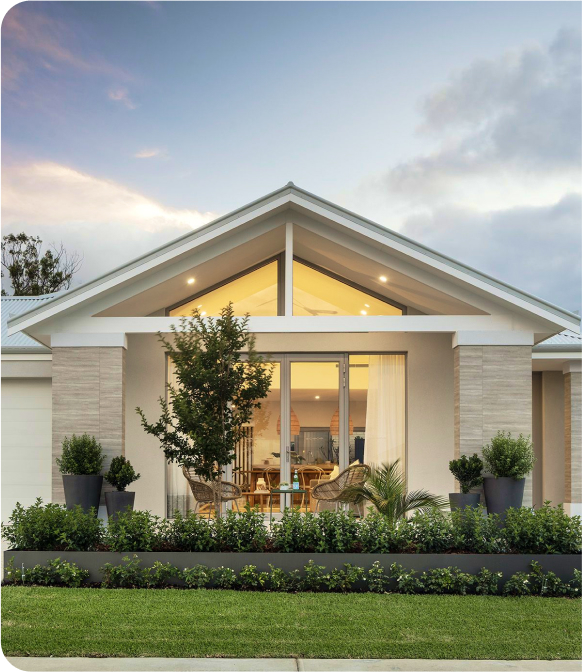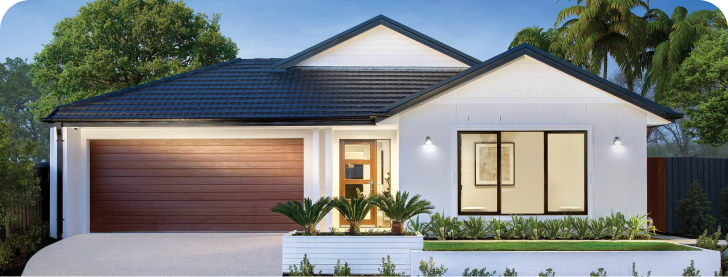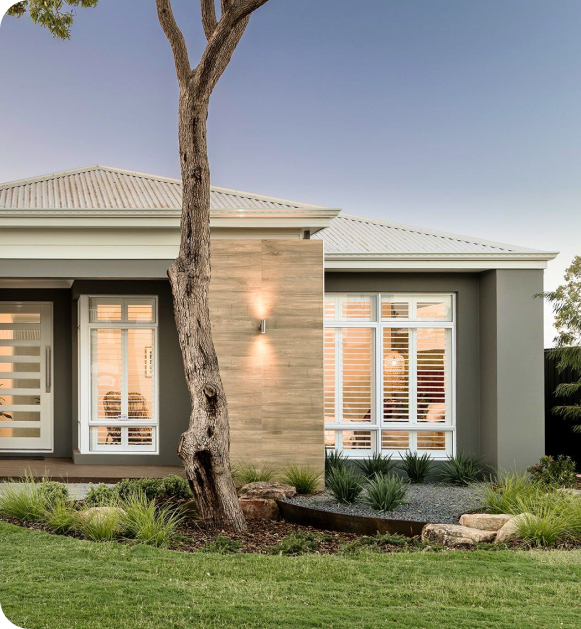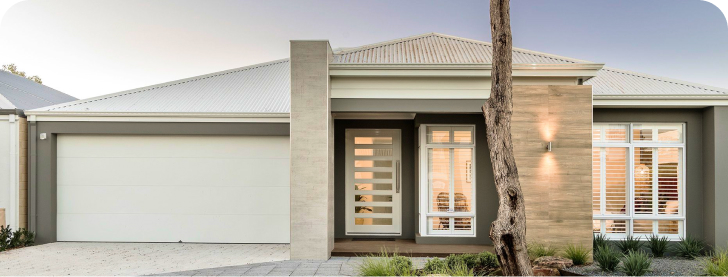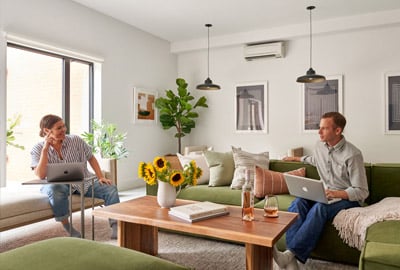
You may have noticed that during the last few years, people have been talking about the co-living model quite a lot. What does this mean? Why do people want to share living space when they can live privately? Actually, co-living is not a brand-new idea. On the contrary, people lived in big families or communities in previous centuries. Nowadays, when there are not enough affordable single-family homes, some people simply do not want to live in tiny homes. Since they cannot yet afford to purchase bigger houses, they prefer to live in big communities. This form of living is especially topical for young people: students, recent graduates, and young professionals.
There are many places that can serve as residences for coliving communities. One of them is ADU. Accessory dwelling units have always been known as one of the most affordable housing solutions. Today, many people build ADUs to transform them into co-living spaces. In this article, we will tell you more about this trend and explain its benefits, legal considerations, design ideas, and perspectives of ADUs as co-living residences.
Co-living can be defined as a modern way of living together with numerous people who are not related to you (they are not your relatives or old friends). A person who lives in co-living shares communal spaces and various facilities with other residents. We should mention that people choose this way of living voluntarily. It is especially popular among young professionals and digital nomads who are looking for affordable housing in major urban centers such as San Francisco, New York City, and Los Angeles.
Co-living is not a universal solution that is suitable for everyone. However, if you are open to new acquaintances and experiences, you will surely like it! Co-living has many advantages. Let us mention just a couple of them.
Adult dorms (co-living spaces) are becoming more and more popular every year. Shared housing has been gaining popularity during the last decade, so now, living in common spaces is a major trend that has an impact on the whole housing market in general. People prefer to rent private rooms, as it is a much more affordable housing solution when compared to renting existing single-family homes.
As a result, today, more people can afford to live in the big city of their dreams, such as New York City, Long Island City, San Francisco, and others. On the one hand, it is a positive trend since sharing space and living in the community provide people with an opportunity to find a comfortable place to stay during a housing crisis. On the other hand, demand for traditional apartments is significantly reduced.
In this case, homeowners who want to have passive income by renting out their properties are advised to transform their single-family apartments, such as ADUs and other living spaces, into co-housing solutions.
If you have already built an ADU on your land plot and rented it out, you can still join the trend of a modern form of affordable living and transform your ADU into a co-living residence. What can be done to achieve this goal?
We have already mentioned that when planning a design of an ADU as a coliving space, it is crucial to plan areas for interactions between residents, such as shared space for relaxing and dining together or co-working space. When designing co-housing spaces, you need to take into account the potential needs and wishes of the residents.
For example, if you are going to rent out ADUs in a big city that is popular among students. You will need to think over the arrangement of a joint library or a place for study and work in a similar format. On the contrary, if you think that young professionals are likely to rent private rooms in your co-housing space, we will recommend that you design an outside garden with a dining area and patio where all the residents will gather to relax and chill out after a long working day.
Anyway, before designing the space, remember that the most important task is to make the most of the little area and make it as functional as possible for many people to live there.
When talking about communal living and coliving arrangements, lawyers admit that there are some serious loopholes in the legislation. It means that it may be hard to determine the legal status of shared housing. In fact, there are various types of co-housing, such as student and adult dormitories, hotel apartments, ADUs, and others. Thus, each co-living space has its own regulations.
When it comes to ADUs, you should first consider all the zoning regulations and building permits that all homeowners need to obtain before building an ADU on their land plots and getting income from renting it out. Compared to a single-family home, there may be more difficulties associated with ADUs. For instance, you will have to ask the following questions:
How many square feet of private space must each resident have? Is a private bedroom big enough? At the same time, do not forget about the maximum size of ADU allowed in your state.
Being a modern form of housing, a well-planned and designed co-living cannot be imagined without some up-to-date technologies which can be used for two major reasons:
People living in one community in private rooms should have a lot of shared amenities that they can take advantage of. For example, all residents need to have access to a laundry with modern washing and drying machines. If the equipment works well, one member of the community will be able to finish washing fast and give way to another. Another way to use technology in these apartments is to track utility usage. Since a lot of people are using the same utilities, but each resident may want to pay bills separately according to the amount of water and electricity they use, this can be tracked only with the help of modern technology.
This category includes all kinds of technology that can be used for work and entertainment, starting from computers and laptops that are placed in the home office that is shared among all the tenants living in one community and ending with smart TV or projector installed in the common recreation area.
Planning, designing, and building ADUs that can be used as co-housing spaces is obviously challenging. This time-consuming process requires a lot of effort and money that you can invest in it. Nevertheless, what may be even more difficult is building a true community. The real reason why people enjoy living with neighbors that they have never met before is new acquaintances that bring amazing experiences and emotions. Residents are able to exchange experiences, find their soulmates, and fight the feeling of loneliness and frustration that many young people face when moving to major cities.
There are many forms of activities that can help unite residents and make them leave their individual rooms to join the community. We recommend that you, as a homeowner and a landlord, think about some organized events and activities in advance. It may be joint yoga classes, movie screenings, and other activities that you should declare traditions of the co-housing.
If you make an effort to build community and make the current residents of your properties friends, you will be able to raise interest in your co-living and attract new tenants.
The main reason why accessory dwelling units have become so popular is their affordability. Many people live together to reduce costs by sharing the total sum paid for various amenities and cleaning services. ADUs have always been much more affordable than standard housing. People who cannot afford to rent full-fledged houses often resort to looking for an ADU. At the same time, ADUs are extremely comfortable to live in. They have all the modern amenities and facilities at a relatively low price. What is more, current ADU regulations are quite favorable in relation to the diverse use of the living area, which allows people to use these housing units as co-livings.
In addition, ADUs are a great option for homeowners who live in the main residence to build accessory units on the same land plot and get additional income by renting them out as co-housing solutions or in a different form.
Talking about challenges, the majority of them are linked to regulations, building permits, and zoning laws associated with ADUs in general, not only those that are used as shared housing. Moreover, some people may suffer from a lack of space to fit all the amenities, such as a dishwasher and laundry machine in each unit. However, this problem is solved by creating a shared area that can be used by all the residents. It is a great solution for those who are ready to sacrifice a little bit of privacy.
When it comes to opportunities, firstly, young people can find a cozy place to stay even with a small budget. Secondly, people (especially those who are moving to major cities to study or work) can find new friends and build a community. Finally, co-housing residents can take advantage of a so-called all-inclusive form of living (when all the amenities and services are included in the total rental cost), which is considered to be the most convenient option by many people.

Both trends for ADUs and co-livings have been gaining popularity under the conditions of the housing crisis. Both forms are considered to be affordable housing solutions that people who have not yet saved enough money to purchase their own full-fledged houses can take advantage of. However, some people living in ADUs on the same land plot with their relatives or in co-livings with their friends and other community members choose this type of housing primarily because they value social interaction above all.
It is unlikely that these trends will be forgotten in the near future. We can predict that co-livings and ADUs will become more and more popular. Probably, co-housing will become more comfortable not only for young digital nomads but also for empty nesters and parents with children. If the majority of people get used to communal living, we can expect actions such as dog walking and child care to become shared as well.
Thus, there is evidence that even more people will be involved in the trend of co-living in the nearest future. In the modern world, especially after the pandemic, people are looking for intimacy and everyday social interaction; this is unlikely to change any time soon.
Co-living is a phenomenon that involves living in a community. It means that you share an apartment with other people and have to interact with your flatmates a lot. You may cook in the kitchen and have dinners together, as well as organize events aimed at getting to know each other and building a stronger community. The trend for co-living has caused the rise of housing startups based on the concept of communal living. One type of co-living that is gaining popularity right now is co-living in ADUs and sharing common spaces while living in the same unit and land plot.
Both these options are affordable housing solutions that are based on sharing an apartment with other people, but there are some significant differences. Firstly, roommates have their own private bedrooms like in a college dorm and may also have their own kitchenette and bathroom. There are usually no communal areas that can be used for joint events and communication. On the other hand, residents of the co-living share kitchen, bathroom, recreation, and outdoor areas and see this as an opportunity to get to know each other better while living together. Secondly, residents of co-livings have some important living arrangements. All members of the community are expected to share the same values and even have the same interests.
The essence of co-living is sharing living spaces and amenities and, therefore, living in a tight-knit community. Usually, you can stay alone in your private bedroom only, but people see it as an advantage. On the contrary, serviced apartments can be called more traditional rentals as they are rented out to various tenants independently. Each tenant has their own apartment with all the private amenities. When living in a serviced apartment, you do not have to interact with your neighbors and even get to know them.
Co-living has two major benefits: affordability and a sense of community. Many young people who want to save money on renting choose this affordable housing solution and, at the same time, do not reduce the level of comfort. By choosing to stay in a co-living with shared spaces, young people can easily find new friends among their neighbors and become a member of a tight-knit community.
